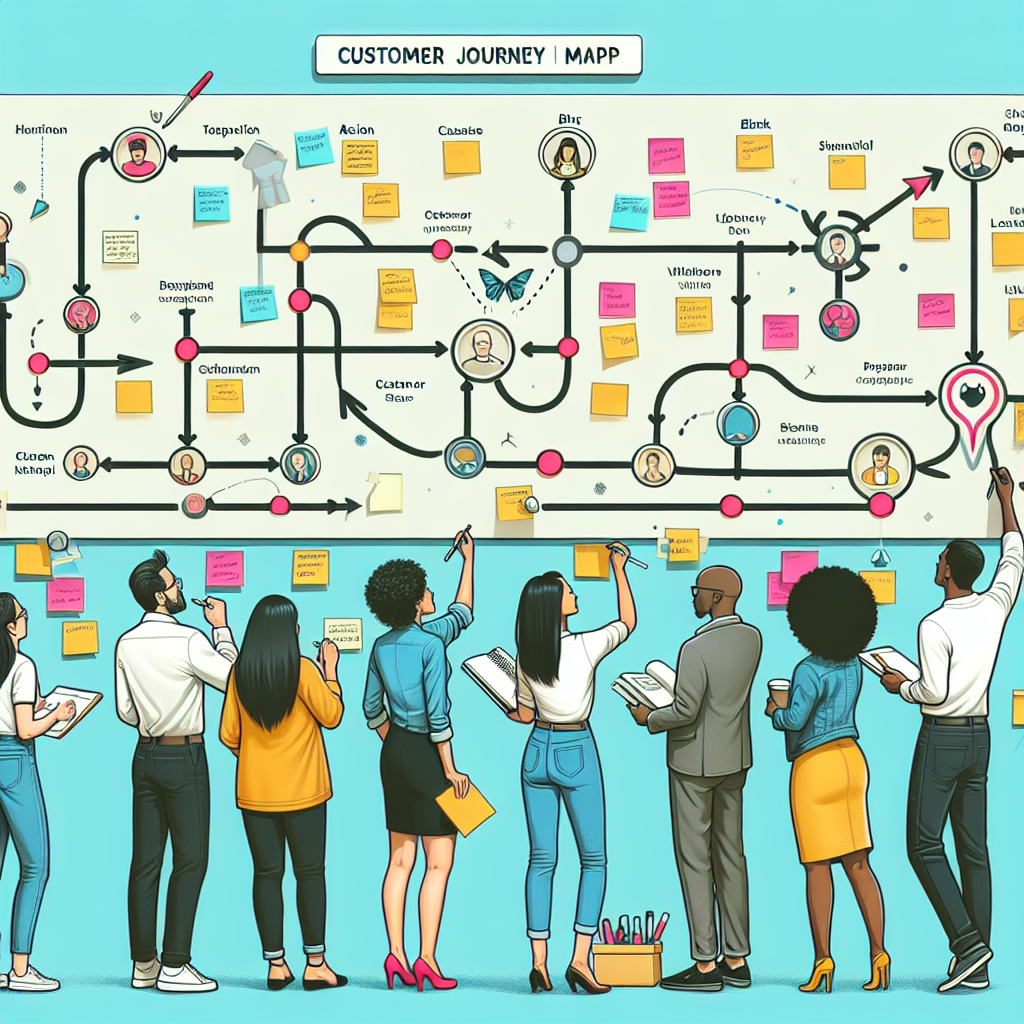Mastering Customer Journey Mapping: Enhancing User Experience and Driving Product Success

In the ever-evolving world of product management, striking a balance between innovation and customer satisfaction is a challenging yet rewarding endeavor. One particular strategy that has proven beneficial for product managers is the use of customer journey mapping. By thoroughly understanding and visualizing the customer journey, you can identify pain points, optimize the user experience, and align your product development efforts with customer needs. In this blog post, we'll explore the essentials of customer journey mapping, highlight best practices, and share real-world success stories and lessons learned.
Understanding Customer Journey Mapping
Customer journey mapping is a visualization technique that outlines the steps a customer takes while interacting with your product or service. It helps you understand the customer's experience from their perspective, uncovering both positive and negative touchpoints. This holistic view is invaluable for diagnosing issues and identifying opportunities for improvement.
Steps to Create an Effective Customer Journey Map
1. Define Your Objectives
Start by clearly defining the objectives of your customer journey mapping exercise. Are you aiming to improve a specific part of the user experience, or do you want a comprehensive view of the entire customer lifecycle? Knowing your goals will guide the structure of your map.
2. Gather Customer Data
Collect data from various sources such as customer surveys, interviews, support tickets, web analytics, and user testing sessions. Quantitative data provides insights into user behavior, while qualitative data captures their emotions and motivations.
3. Identify Customer Personas
Segment your customers into distinct personas based on their behaviors, goals, and demographics. Each persona will have a unique journey, highlighting different challenges and opportunities.
4. Outline Key Stages
Break down the customer journey into key stages such as awareness, consideration, purchase, onboarding, and retention. Each stage should capture the customer's actions, thoughts, and emotions.
5. Map Touchpoints and Channels
Identify all touchpoints where customers interact with your product or service, such as your website, mobile app, customer support, and social media channels. Map these touchpoints to the corresponding stages of the customer journey.
6. Visualize the Customer Journey
Create a visual representation of the customer journey map using tools like Miro, Lucidchart, or even a simple whiteboard. Ensure the map is easy to understand and highlights critical insights and pain points.
7. Analyze and Take Action
Analyze the customer journey map to identify gaps, pain points, and areas of friction. Develop action plans to address these issues and enhance the overall customer experience. Regularly update the map to reflect changes and improvements.
Best Practices for Customer Journey Mapping
1. Collaborate Across Teams
Involve cross-functional teams such as marketing, sales, customer support, and product development in the customer journey mapping process. Collaborative efforts ensure a comprehensive understanding of the customer experience from multiple perspectives.
2. Keep the Customer at the Center
Focus on the customer's perspective rather than internal processes. The goal is to understand their feelings, motivations, and pain points to create a seamless and satisfying experience.
3. Validate with Real Customers
Validate your customer journey map by engaging with real customers. Conduct surveys, interviews, and usability tests to ensure your map accurately reflects their experiences and needs.
4. Iterate and Improve
Customer journey mapping is not a one-time activity. Continuously update and refine the map based on new data, customer feedback, and evolving business goals. Regular iterations help you stay aligned with customer expectations.
Success Stories and Lessons Learned
Case Study: Fintech Startup
A fintech startup used customer journey mapping to improve their onboarding process. They discovered that users were dropping off during account verification due to unclear instructions. By revising the communication and providing step-by-step guidance, they reduced the dropout rate by 40% and significantly improved user satisfaction.
Case Study: E-commerce Platform
An e-commerce platform implemented customer journey mapping to enhance their shopping experience. They identified that customers were abandoning their carts due to unexpected shipping costs at checkout. By transparently displaying shipping fees earlier in the process, they increased conversion rates by 25%.
Common Pitfall: Ignoring Emotional Feedback
One common mistake is overlooking the emotional aspect of the customer journey. A SaaS company faced this issue when they focused solely on quantitative data, missing out on user frustrations. Incorporating emotional feedback through interviews and user testing provided a clearer picture of the user experience, leading to better product improvements.
Conclusion
Customer journey mapping is a powerful tool for product managers to deeply understand and improve the user experience. By following best practices and learning from real-world examples, you can create impactful journey maps that drive product success. Have you used customer journey mapping in your product management process? Share your experiences and tips in the comments below!



